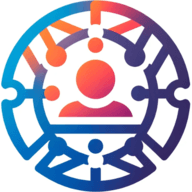In the ever-evolving business landscape, diversity and inclusion have become more than just buzzwords. They are critical components of successful staffing strategies. This blog post delves into the importance of diversity and inclusion in staffing, how to implement it, and the benefits it brings to organizations.
Understanding Diversity and Inclusion in Staffing
Diversity in staffing refers to the practice of hiring individuals without bias, regardless of their race, religion, age, gender, or disability status. Inclusion, on the other hand, is about ensuring that these diverse individuals feel valued, respected, and have equal access to opportunities and resources within the organization.
Organizations that value diversity and inclusion in their staffing strategies understand that a diverse workforce brings a variety of perspectives, ideas, and experiences. These diverse viewpoints can lead to innovative solutions, improved problem-solving, and better decision-making.
Inclusion ensures that every employee feels valued and included, leading to increased employee engagement, productivity, and retention. When employees feel valued and included, they are more likely to be committed to their work and the organization, leading to better business outcomes.
The Importance of Diversity and Inclusion in Staffing
Diversity and inclusion in staffing are not just about ticking boxes or meeting quotas. They are about creating a workforce that reflects the diverse world we live in. A diverse and inclusive workforce can bring numerous benefits to an organization.
A diverse workforce can bring a variety of perspectives, ideas, and experiences, leading to innovative solutions and improved problem-solving. It can also help organizations better understand and serve their diverse customer base.
Inclusion ensures that all employees feel valued and included, leading to increased employee engagement and productivity. It can also improve employee retention, as employees are more likely to stay with an organization where they feel valued and included.
Implementing Diversity and Inclusion in Staffing
Implementing diversity and inclusion in staffing requires a strategic and intentional approach. It starts with a commitment from leadership to value diversity and inclusion and to create an inclusive culture.
Organizations can start by reviewing their current staffing practices and identifying any barriers to diversity and inclusion. This could include unconscious bias in hiring practices, lack of diversity in leadership roles, or a culture that does not value diversity and inclusion.
Once these barriers have been identified, organizations can develop strategies to address them. This could include unconscious bias training for hiring managers, implementing diverse hiring practices, and creating a culture that values diversity and inclusion.
Challenges in Implementing Diversity and Inclusion in Staffing
While the benefits of diversity and inclusion in staffing are clear, implementing it can come with its own set of challenges. These can include resistance from employees, unconscious bias, and lack of understanding about the benefits of diversity and inclusion.
To overcome these challenges, organizations need to communicate the benefits of diversity and inclusion clearly and consistently. They also need to provide training and support to help employees understand and value diversity and inclusion.
Unconscious bias can be a significant barrier to diversity and inclusion in staffing. Organizations need to provide unconscious bias training to help employees recognize and overcome their biases.
Measuring the Success of Diversity and Inclusion in Staffing
Measuring the success of diversity and inclusion in staffing can be challenging, but it is essential. Organizations can start by tracking diversity metrics, such as the diversity of new hires, the diversity of leadership roles, and employee perceptions of diversity and inclusion.
However, measuring diversity and inclusion is not just about numbers. It's also about the impact on the organization. This can include the impact on employee engagement, productivity, and retention, as well as the impact on innovation and decision-making.
Organizations should also seek feedback from employees to understand their experiences and perceptions of diversity and inclusion. This can help organizations identify areas for improvement and measure the impact of their diversity and inclusion efforts.
The Future of Diversity and Inclusion in Staffing
The future of diversity and inclusion in staffing is promising. As organizations continue to recognize the benefits of a diverse and inclusive workforce, they are likely to continue to prioritize diversity and inclusion in their staffing strategies.
However, there is still work to be done. Organizations need to continue to challenge their biases, create inclusive cultures, and value diversity and inclusion in all aspects of their business.
The future of diversity and inclusion in staffing is not just about meeting quotas or ticking boxes. It's about creating a workforce that reflects the diverse world we live in and valuing the unique perspectives, ideas, and experiences that each individual brings.
Wrapping Up: Diversity and Inclusion in Staffing
Embracing diversity and inclusion in staffing strategies is more than just a trend—it's a business imperative. A diverse and inclusive workforce can bring numerous benefits, from increased innovation and improved decision-making to higher employee engagement and retention. While implementing diversity and inclusion in staffing can come with challenges, the benefits far outweigh them. As we move forward, diversity and inclusion will continue to play a crucial role in shaping successful staffing strategies.

